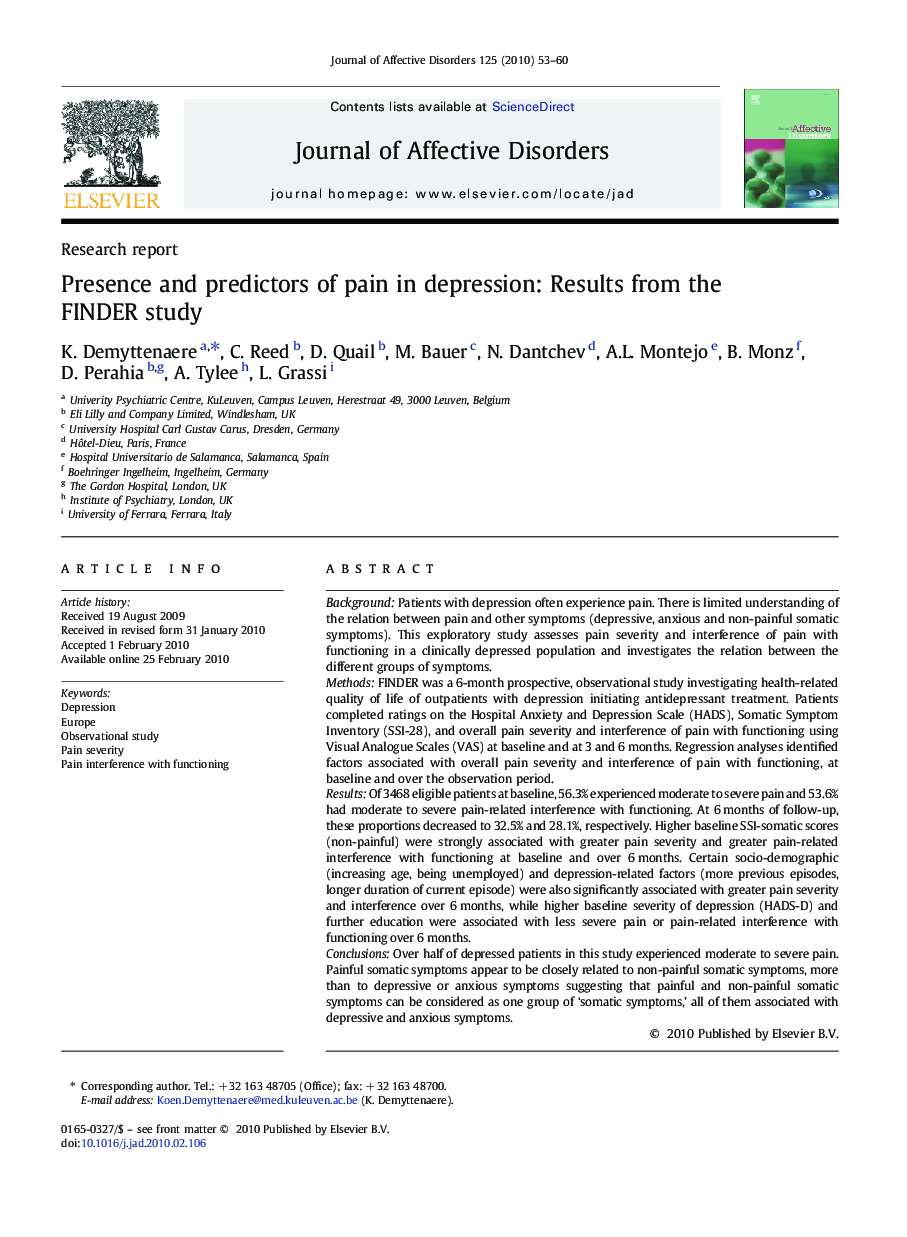| کد مقاله | کد نشریه | سال انتشار | مقاله انگلیسی | نسخه تمام متن |
|---|---|---|---|---|
| 6236285 | 1608195 | 2010 | 8 صفحه PDF | دانلود رایگان |

BackgroundPatients with depression often experience pain. There is limited understanding of the relation between pain and other symptoms (depressive, anxious and non-painful somatic symptoms). This exploratory study assesses pain severity and interference of pain with functioning in a clinically depressed population and investigates the relation between the different groups of symptoms.MethodsFINDER was a 6-month prospective, observational study investigating health-related quality of life of outpatients with depression initiating antidepressant treatment. Patients completed ratings on the Hospital Anxiety and Depression Scale (HADS), Somatic Symptom Inventory (SSI-28), and overall pain severity and interference of pain with functioning using Visual Analogue Scales (VAS) at baseline and at 3 and 6Â months. Regression analyses identified factors associated with overall pain severity and interference of pain with functioning, at baseline and over the observation period.ResultsOf 3468 eligible patients at baseline, 56.3% experienced moderate to severe pain and 53.6% had moderate to severe pain-related interference with functioning. At 6Â months of follow-up, these proportions decreased to 32.5% and 28.1%, respectively. Higher baseline SSI-somatic scores (non-painful) were strongly associated with greater pain severity and greater pain-related interference with functioning at baseline and over 6Â months. Certain socio-demographic (increasing age, being unemployed) and depression-related factors (more previous episodes, longer duration of current episode) were also significantly associated with greater pain severity and interference over 6Â months, while higher baseline severity of depression (HADS-D) and further education were associated with less severe pain or pain-related interference with functioning over 6Â months.ConclusionsOver half of depressed patients in this study experienced moderate to severe pain. Painful somatic symptoms appear to be closely related to non-painful somatic symptoms, more than to depressive or anxious symptoms suggesting that painful and non-painful somatic symptoms can be considered as one group of 'somatic symptoms,' all of them associated with depressive and anxious symptoms.
Journal: Journal of Affective Disorders - Volume 125, Issues 1â3, September 2010, Pages 53-60